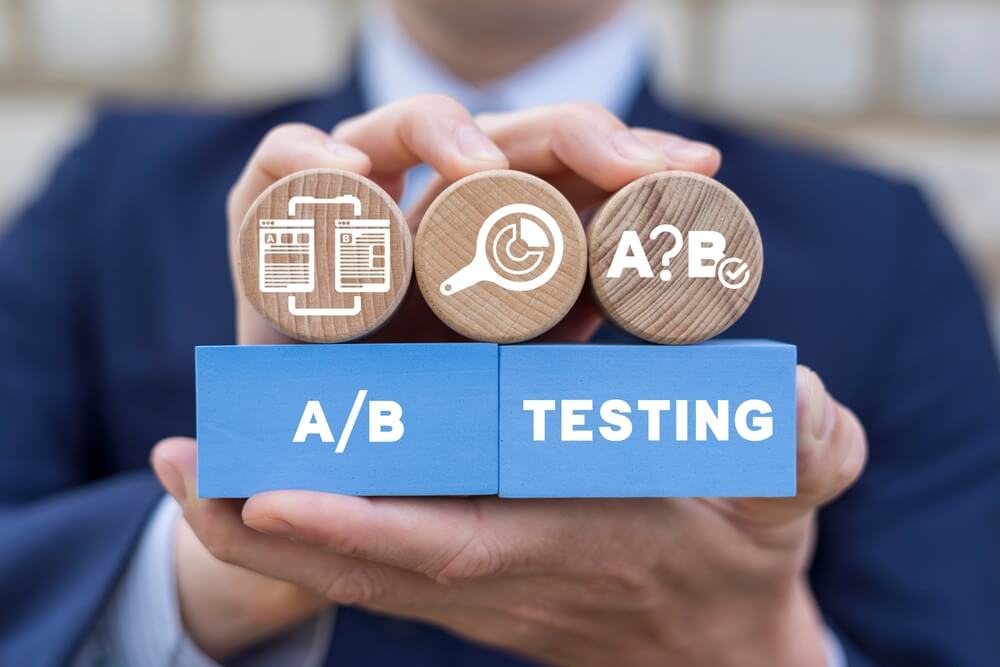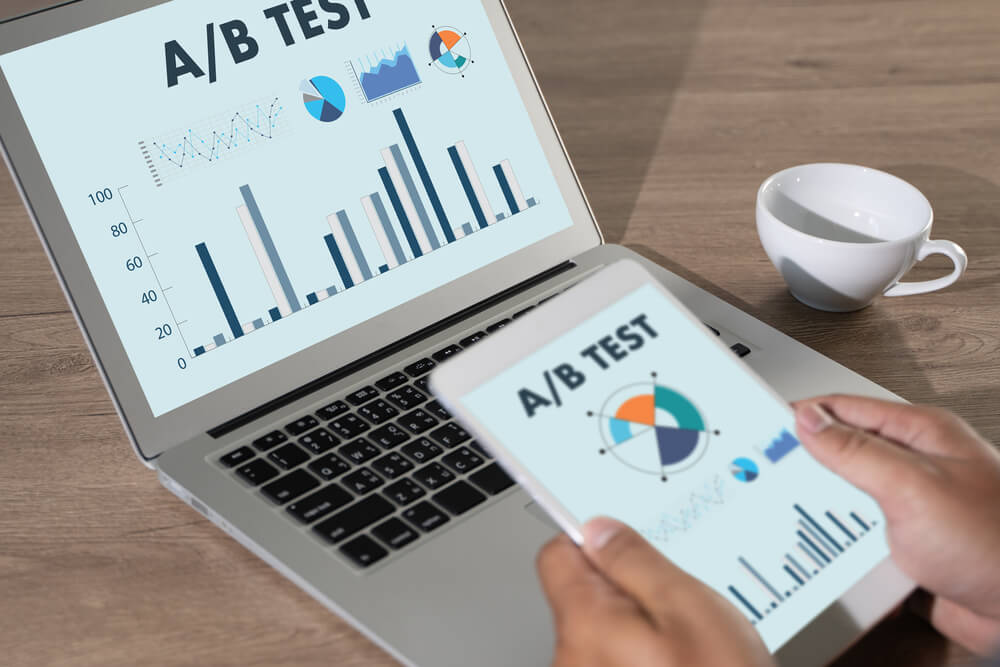
A/B Testing Guide: Unlocking Success in B2B Email Marketing
A/B testing is a method of comparing two different versions of an element, such as an email. This method helps determine which version is more effective in achieving specific goals, including improving engagement and conversion..
This article discusses more about this type of test and how to use it in B2B email marketing, covering the following topics:
 Writing a high-quality email entails making it relevant, credible, and engaging. Testing your elements and knowing what they are provides benefits such as yielding actionable data tied to core objectives and metrics. It also reduces guesswork when testing.
Consider A/B testing the following email components:
Writing a high-quality email entails making it relevant, credible, and engaging. Testing your elements and knowing what they are provides benefits such as yielding actionable data tied to core objectives and metrics. It also reduces guesswork when testing.
Consider A/B testing the following email components:
 B2B email marketing, A/B testing, and data analytics work together in a mutually beneficial way.
Data analytics provides the foundation by collecting customer data and identifying insights that inform the email marketing strategy. This includes analyzing purchase history to determine customer lifetime value segments or looking at past email performance to find optimal send times.
A/B testing is an ideal way to act on the customer intelligence from your analytics. For example, you might want to test generic and personalized subject lines for different customer segments. You set up the test, send it out, and leverage data analytics again to track open rates, click-through rates, and conversions.
The iterative cycle of using data analytics and optimizing components through A/B testing allows you to refine B2B email campaigns. Testing layouts might show that a prominently placed CTA button leads to more clicks. The data reveals why the email performs well or poorly, while A/B testing squeezes more results from the insights.
This symbiotic use of data analytics and testing makes B2B email campaigns an increasingly optimized, fine-tuned process.
How do you effectively analyze the test results? Here are the best tips:
B2B email marketing, A/B testing, and data analytics work together in a mutually beneficial way.
Data analytics provides the foundation by collecting customer data and identifying insights that inform the email marketing strategy. This includes analyzing purchase history to determine customer lifetime value segments or looking at past email performance to find optimal send times.
A/B testing is an ideal way to act on the customer intelligence from your analytics. For example, you might want to test generic and personalized subject lines for different customer segments. You set up the test, send it out, and leverage data analytics again to track open rates, click-through rates, and conversions.
The iterative cycle of using data analytics and optimizing components through A/B testing allows you to refine B2B email campaigns. Testing layouts might show that a prominently placed CTA button leads to more clicks. The data reveals why the email performs well or poorly, while A/B testing squeezes more results from the insights.
This symbiotic use of data analytics and testing makes B2B email campaigns an increasingly optimized, fine-tuned process.
How do you effectively analyze the test results? Here are the best tips:
- Understanding the basics and testing effectively
- Identifying key elements
- Setting clear objectives
- Analyzing the test results
Tired of investing in Search Engine Optimization without getting any results? See how Digital Authority Partners turns that around!
Understanding the Basics of A/B Testing
Knowing the basics of A/B testing is crucial for productively implementing it in your B2B email campaigns. Here are the fundamental tips to remember:- Clearly outline the goal of your A/B test. Do you want to increase open rates and click-throughs? Would you like to convert more leads?
- Select one element to test at a time. Options include subject lines, email copy, calls to action (CTAs), or other significant variables affecting performance.
- Develop two variations of your email, differing only in the chosen variable. The rest of the content needs to remain consistent to accurately measure the influence of the tested variable.
- Split your email list into two random groups. One group receives version A, while the other receives version B. This ensures a fair comparison between the two versions.
- Send out both versions of the email to the respective groups simultaneously. Running the test under similar conditions is essential to get accurate results.
- Track and analyze relevant metrics based on your objective. Use email marketing analytics tools to gather and interpret this data.
Identifying Key Elements for A/B Testing
 Writing a high-quality email entails making it relevant, credible, and engaging. Testing your elements and knowing what they are provides benefits such as yielding actionable data tied to core objectives and metrics. It also reduces guesswork when testing.
Consider A/B testing the following email components:
Writing a high-quality email entails making it relevant, credible, and engaging. Testing your elements and knowing what they are provides benefits such as yielding actionable data tied to core objectives and metrics. It also reduces guesswork when testing.
Consider A/B testing the following email components:
- Subject lines: Test different subject lines to see which ones lead to higher open rates. Experiment with length, tone, and personalization to find the most effective variation.
- Email copy: Consider variations in the body of the email, such as different messaging, content length, and writing styles.
- CTA: Test different CTA buttons, text, and placements to optimize click-through rates.
- Images and media: Test the effect of different images, graphics, or videos in your emails. Compare a visual-heavy and a text-only email.
- Sender name and email address: Consider testing whether a personal, company, or department name is more effective.
- Timing and frequency: Experiment with the timing of your emails to determine when your B2B audience is most responsive. Do the same for the frequency to find the optimal balance between staying visible and avoiding email fatigue.
- Email design and layout: Determine which is the most mobile-friendly and accessible. Compare a single- and multi-column layout.
Setting Clear Objectives for A/B Tests
Clear objectives provide purpose for your A/B tests and ensure your efforts yield valuable results for B2B email campaigns. Defining the desired outcomes focuses testing on strategic elements directly influencing core metrics and critical data. Here is a step-by-step guide on how to set them:- Determine the primary metrics that align with your B2B email goals. Standard metrics include open rates, click-through rates, conversion rates, and revenue generated.
- Consider the characteristics and behaviors of your B2B audience. What are their preferences and behaviors? Tailor your objectives to align with what matters most to them.
- Before conducting A/B tests, establish a baseline performance for the metric you want to improve. This provides a benchmark against which you can measure the success of your variations.
- Clearly articulate what you expect to achieve with the A/B test. For example, if you hypothesize that changing the subject line increases open rates, explicitly state this.
- If your B2B email list is diverse, consider segmenting your audience based on relevant criteria. This helps you tailor the test and objectives to specific groups.
- Document your A/B test objectives, including the rationale behind the test and the expected outcomes. Communicate this information with your team to align everyone with the goals.
- Regularly monitor the performance of your variations and analyze the results against your defined objectives. Adjust your strategy based on the insights.
Analyzing A/B Test Results
 B2B email marketing, A/B testing, and data analytics work together in a mutually beneficial way.
Data analytics provides the foundation by collecting customer data and identifying insights that inform the email marketing strategy. This includes analyzing purchase history to determine customer lifetime value segments or looking at past email performance to find optimal send times.
A/B testing is an ideal way to act on the customer intelligence from your analytics. For example, you might want to test generic and personalized subject lines for different customer segments. You set up the test, send it out, and leverage data analytics again to track open rates, click-through rates, and conversions.
The iterative cycle of using data analytics and optimizing components through A/B testing allows you to refine B2B email campaigns. Testing layouts might show that a prominently placed CTA button leads to more clicks. The data reveals why the email performs well or poorly, while A/B testing squeezes more results from the insights.
This symbiotic use of data analytics and testing makes B2B email campaigns an increasingly optimized, fine-tuned process.
How do you effectively analyze the test results? Here are the best tips:
B2B email marketing, A/B testing, and data analytics work together in a mutually beneficial way.
Data analytics provides the foundation by collecting customer data and identifying insights that inform the email marketing strategy. This includes analyzing purchase history to determine customer lifetime value segments or looking at past email performance to find optimal send times.
A/B testing is an ideal way to act on the customer intelligence from your analytics. For example, you might want to test generic and personalized subject lines for different customer segments. You set up the test, send it out, and leverage data analytics again to track open rates, click-through rates, and conversions.
The iterative cycle of using data analytics and optimizing components through A/B testing allows you to refine B2B email campaigns. Testing layouts might show that a prominently placed CTA button leads to more clicks. The data reveals why the email performs well or poorly, while A/B testing squeezes more results from the insights.
This symbiotic use of data analytics and testing makes B2B email campaigns an increasingly optimized, fine-tuned process.
How do you effectively analyze the test results? Here are the best tips:
- Identify the relevant metrics to track. These include open, bounce, click-through, conversion, and unsubscribe rates.
- Perform a T- or chi-squared test to determine whether the differences between variations are significant, trivial, or accidental.
- Ensure your conclusions are meaningful by controlling your sample size and time frame of the tests.
- Draw your conclusion based on the statistical significance and the performance metrics.
- Document the insights from your A/B tests. This documentation is a valuable resource for refining your B2B email strategy.
- Implement the insights into future email campaigns. Continuously refine your approach based on what works best for your B2B audience.
Summing Up
A/B testing is one of the essential steps to unlocking email marketing success (as is working with a B2B email marketing agency). Systematically comparing different elements optimizes the content to achieve the desired results, such as increased engagement, improved user experience, more sales-ready leads, or better brand reputation. Ready to elevate your A/B testing strategies? Contact Digital Authority Partners (DAP) today and schedule a free consultation.Want To Meet Our Expert Team?
Book a meeting directly here



